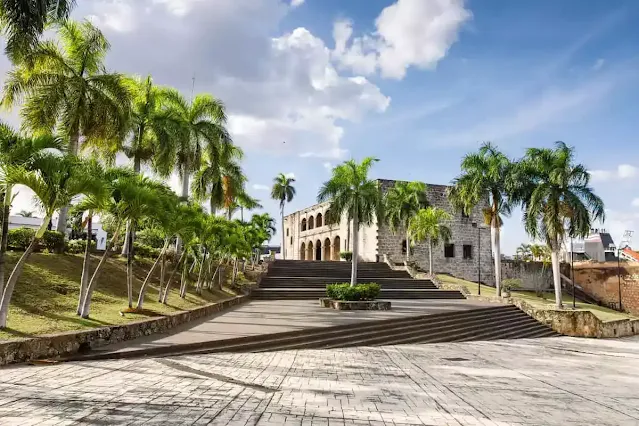Every year, millions of people are drawn to the Dominican Republic's stunning beaches, but few are aware of the historical treasures that the country has hidden within its borders. With a rich history dating back to the Taino tribes and Columbus's landing in 1492, the country's historical landmarks are as breathtaking as its natural beauty. This article guides you through five of the most remarkable historical places in the Dominican Republic, ensuring you get a taste of the country's captivating past.
1. Santo Domingo's Zona Colonial
An exploration of historical places in the Dominican Republic is incomplete without visiting Santo Domingo's Zona Colonial. This UNESCO World Heritage site is home to the first cathedral, hospital, customs house, and university in the Americas. Walking down its cobbled streets, one can feel the weight of history and the lingering spirit of the early Spanish settlers.
2. The Alcazar de Colon
Within the Zona Colonial, you'll find the Alcazar de Colon, a 16th-century palace that was once the residence of Diego Colon, Christopher Columbus's son. This well-preserved example of Spanish colonial architecture now houses a museum featuring a vast array of period furniture and artifacts, providing a glimpse into the life of the Spanish aristocracy during the colonial era.
3. Fortaleza Ozama
Overlooking the Ozama River, Fortaleza Ozama stands as the oldest military fortress in the Americas. Its thick walls, watchtowers, and strategic location provide an excellent example of Spanish colonial military architecture. The fortress' incredible views of Santo Domingo add to the allure of this historic site.
4. Tres Ojos National Park
Diverging slightly from the colonial theme, Tres Ojos National Park showcases the country's pre-colonial history. Named after its three stunning limestone caves filled with clear, blue water, the park is adorned with prehistoric Taino rock art, connecting visitors to the island's indigenous past.
5. San Felipe Fortress, Puerto Plata
Perched on a hill overlooking the Atlantic Ocean, San Felipe Fortress in Puerto Plata is a testament to the country's colonial past. Constructed in 1577 to ward off pirates, the fortress now serves as a museum, highlighting the struggles and victories of the Dominican Republic's past.
6. The Ruins of La Isabela
Located near Puerto Plata, the ruins of La Isabela are remnants of the first permanent European settlement in the Americas. Established by Christopher Columbus during his second voyage, this site provides insight into the early interactions between the European settlers and the indigenous Taino people.
7. The Basilica Cathedral of Santa Maria la Menor
The Basilica Cathedral of Santa Maria la Menor, located in the heart of Santo Domingo, is the oldest cathedral in the Americas. Its stunning architecture, combining Gothic and Baroque styles, mirrors the Spanish influence on Dominican culture. Walking through its grand archways, one can't help but feel a connection to the centuries of worshippers who came before.
8. Cueva de las Maravillas
The Cueva de las Maravillas, or Cave of Wonders, offers a unique exploration of the Dominican Republic's pre-colonial history. Located halfway between Santo Domingo and La Romana, this cavern is adorned with Taino petroglyphs and pictographs, transporting visitors back to a time before the Spanish arrival.
9. Altos de Chavón
A trip to Altos de Chavón transports you back to a 16th-century Mediterranean village. This re-created cultural center, located in La Romana, hosts an archaeological museum featuring artifacts from the island's indigenous cultures. Its amphitheater, renowned for hosting a range of international events, combines old-world charm with modern functionality.
10. The Palace of Fine Arts, Santo Domingo
Rounding off our list is the Palace of Fine Arts in Santo Domingo. Though not as old as other sites on this list, its significance to the country's modern cultural history is undeniable. As a home for theatre, ballet, and classical music, the palace plays a pivotal role in the Dominican Republic's cultural scene.
Indeed, the Dominican Republic's historical sites offer an enthralling journey through time. Visiting these historical places in the Dominican Republic allows you to understand the complex tapestry of cultures and events that shaped the nation we see today.
These ten sites are just the tip of the iceberg. From the majestic Basilica Cathedral of Santa Maria la Menor in Santo Domingo to the mysterious Cueva de las Maravillas with its indigenous artwork, there is so much more to discover. Delve deeper into the country's history and discover more about the Taino tribes, Spanish settlers, and the pivotal events that have made the Dominican Republic the fascinating destination it is today.
Every inch of this vibrant Caribbean nation is steeped in history and brimming with stories waiting to be told. By visiting the Dominican Republic's historical sites, you are not merely sightseeing - you are walking in the footsteps of the Taino, the Spanish, and the many others who have called this beautiful country home. It is an adventure that history enthusiasts will never forget.
In conclusion, the Dominican Republic offers more than just beaches and resorts. Its historical sites are filled with stories of adventure, discovery, conflict, and culture. As you explore these five prime historical places in the Dominican Republic, you will gain a new perspective on this beautiful Caribbean nation and the rich history that has shaped its present. So, the next time you plan a trip to the Dominican Republic,
